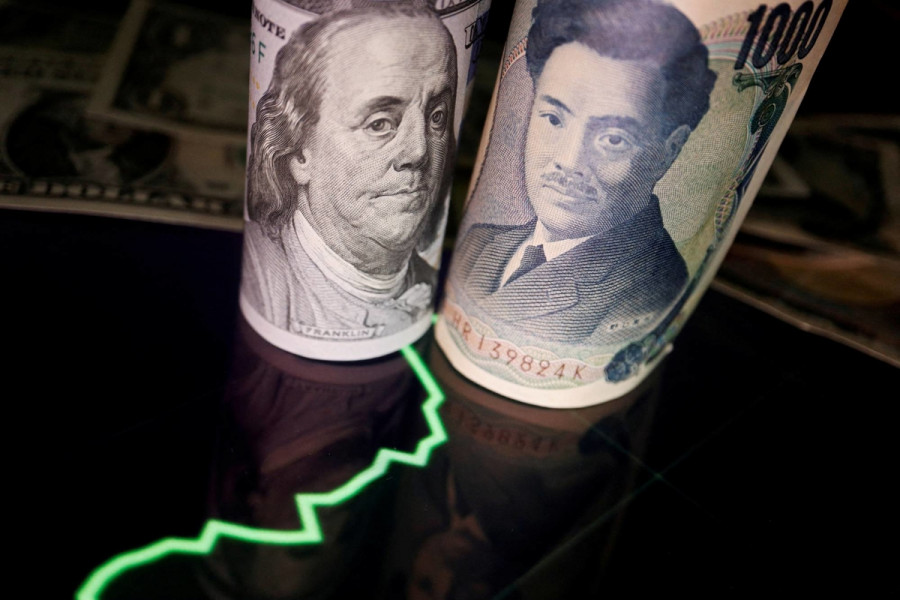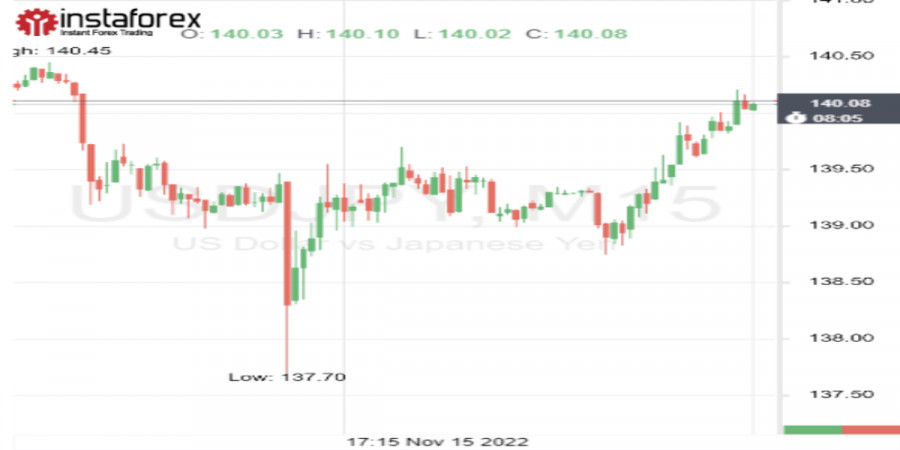

A storm hit the foreign exchange market on Tuesday. Strong volatility was observed in all dollar majors, including the USD/JPY pair. However, in the end, the US currency got away with it.
Yen under dovish pressureYesterday turned out to be very eventful in terms of information and therefore pretty exhausted traders. The main weather vane of the foreign exchange market, the dollar, reacted extremely sharply to all events and changed its direction literally after every news.
The biggest price fluctuations on Tuesday were observed on the USD/JPY chart. At the start of the day, the dollar gained a confident upper hand over the yen, as it was under pressure from weak Japanese economic data.
The GDP statistics published yesterday for the third quarter showed a sharp decline in the indicator. On an annualized basis, the country's economy shrank by 1.2%, while growth of 1.1% was expected.
Such a serious drop in the pound further convinced the market that in the near future the Bank of Japan will not retreat from its dovish strategy.
To support the fragile economy, the central bank will continue to implement its unprecedented stimulus programs and keep interest rates in negative territory.
This means that the monetary divergence between Japan and America, where further rate hikes are expected, will continue to grow. This scenario is negative for the yen.

As for the positive factors for the Japanese currency, the most important catalyst remains the slowdown in the pace of monetary policy tightening in the United States. The growth of speculation on this topic last week helped the JPY to strengthen significantly against the greenback.
Yesterday, yen bulls received another argument in favor of the fact that the Federal Reserve's transition to less hawkish actions is more real than it seems.
After unexpectedly soft data on consumer inflation in the US, which came out last week, the same weak report on producer prices followed.
Last month, the PPI indicator grew by 8% in annual terms. This is less than the forecast estimate (8.3%) and lower than the value recorded in September (8.4%).
– It is quite obvious that the overall price pressure in America is moving downward, and the Fed will most likely decide to slow down, – said currency strategist Karl Schamotta.
Another weakening of the hawkish expectations of the market again hurt the dollar. Immediately after the release of the producer price index, greenback tested a new 3-month low at 105.35.
The dollar fell in all directions, but most of all against the yen. Literally overnight, the USD/JPY pair plunged by more than 150 points, to the level of 137.62.
An unexpected driver for the dollarHowever, the dollar-yen asset did not have to be a loser for long. It recovered its losses fairly quickly, springing back up to the area of 139.50.
The greenback was supported by the Empire State index of industrial activity from the Fed Bank of New York. It turned out that in November the indicator increased from -9.1 to 4.5, exceeding economists' expectations.
Also, the greenback was strengthened by comments from members of the Fed. Several officials stressed yesterday that the central bank's work to reduce inflation is still far from being completed.
But the US currency received the strongest impetus from the growth of geopolitical tensions. On Tuesday evening, Western media reported the fall of Russian missiles on the territory of Poland, resulting in the death of two people. At the same time, Moscow denied its involvement in the incident.
Now the markets are afraid that a blow to Poland, which is a member of NATO, could lead to another escalation of the conflict between the West and Russia. Against this background, the dollar, which is considered the best safe haven currency, is showing growth in all directions.
On Wednesday morning, the dollar index rose 0.19% to 106.63. Meanwhile, the USD/JPY pair jumped by 0.4% and was trading near the 140 level.
Analysts draw attention to the fact that in the short term, the further dynamics of the major will depend on the news headlines around the emergency in Poland.
Also, its rate may be affected by the release of data on the volume of retail sales in the United States and the speeches of the Fed speakers.
The technical picture for the USD/JPY pairDespite the fluctuations of the DXY index, the dollar-yen pair formed a double bottom figure on the chart, which led to a bullish reversal of the asset.
The major rose above the 20th and 50th EMA by 139.55 and 139.90, respectively. This significantly enhances the upward filters.
Also, at the moment, the relative strength index of the RSI is trying to move into the bullish range of 60.00-80.00. In case of successful completion of this scenario, dollar bulls will feel even greater strength.
If bulls manage to break above Monday's high of 140.80, this could lead to a breakout of the double bottom and significantly fuel the dollar. Then traders will focus on the 142.49 mark.